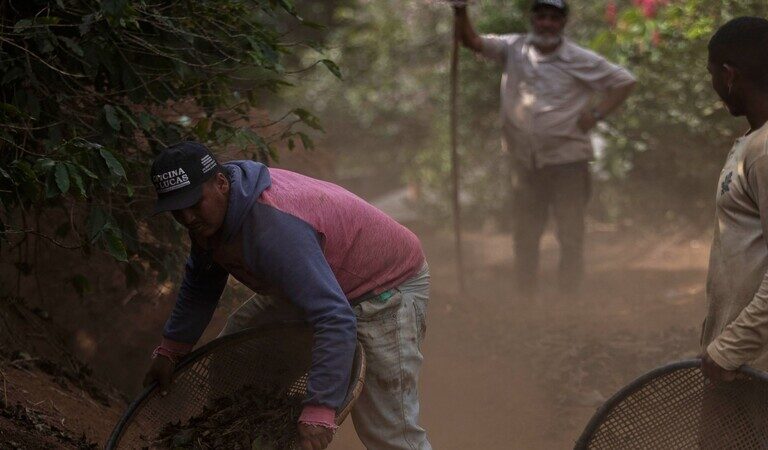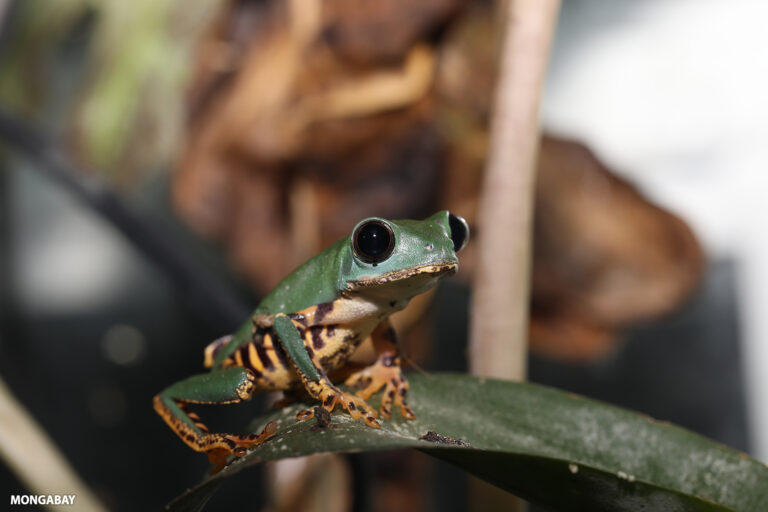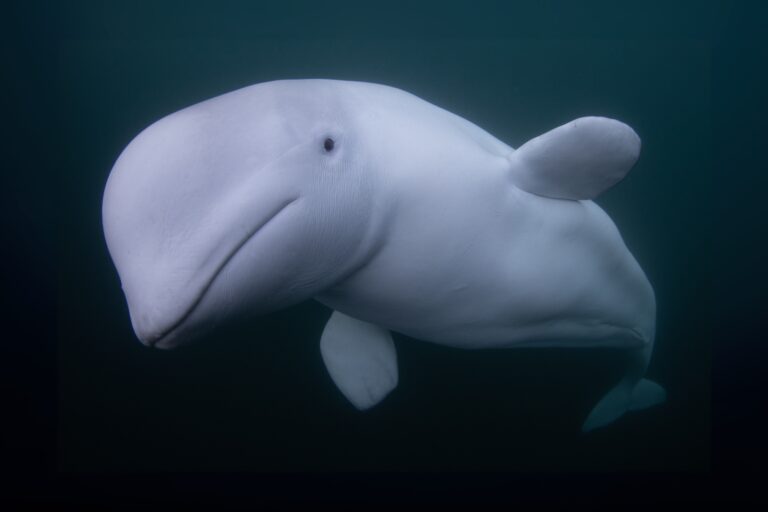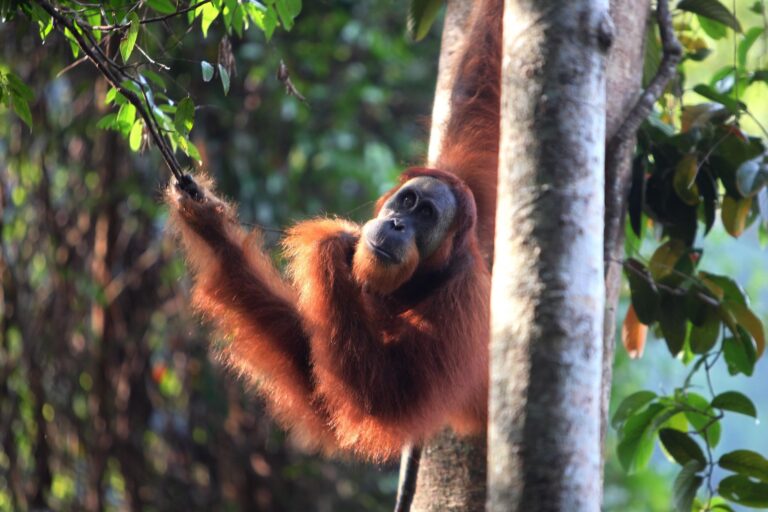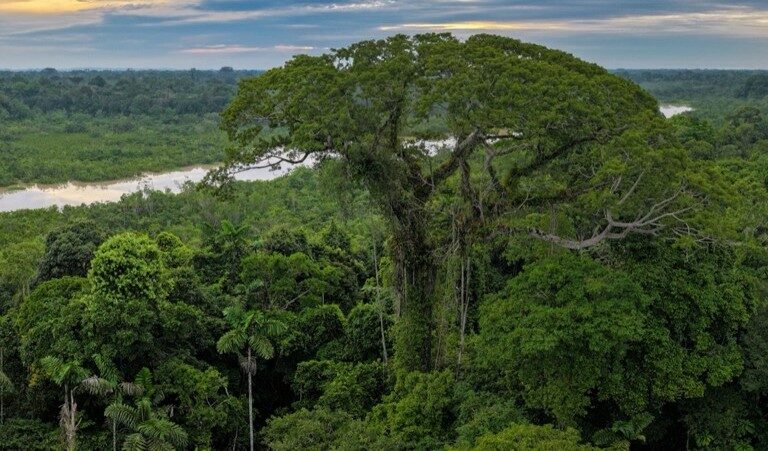- Conservationists in Indonesia say they’ve successfully extracted eggs from a Sumatran rhino to be used in an IVF program meant to boost the population of the near-extinct species.
- The donor rhino, known as Pahu, is a Bornean specimen of the Sumatran rhino, and her egg would greatly expand the genetic pool of a species believed to number as few as 40.
- Since 2012, three Sumatran rhinos have been born under Indonesia’s captive-breeding program, but all are closely related: a single captive male is the father to two of them and grandfather to the third.
- Conservationists say they hope to eventually fertilize Pahu’s eggs with sperm from captive Sumatran males, with one of the Sumatran females then serving as a surrogate to hopefully bring a baby to term.
JAKARTA — Conservationists in Indonesia have announced the successful harvesting of egg cells from a female Sumatran rhino, a key step in an effort to breed the critically endangered species in captivity and boost its gene pool.
In a statement on Oct. 31 (which appears to have since been removed), the Indonesian environment ministry said a team of conservation experts extracted the ovarian follicles, which contain the egg, as well as other tissue samples from the rhino at the Kelian Sumatran Rhino Sanctuary (SRS) in East Kalimantan, on the island of Borneo. The rhino, named Pahu, was captured from the wild and placed in the Kelian SRS in 2018.
Pahu is a Bornean specimen of the Sumatran rhino (Dicerorhinus sumatrensis), and her capture was expected to add genetic diversity to the small captive-bred population held at Way Kambas SRS on the island of Sumatra. However, she was later determined to be too small and too old to undergo mating with any of the captive males at Way Kambas. Harvesting her eggs for possible use in in-vitro fertilization is thus seen as crucial in the captive-breeding program, which since 2012 has seen just three rhinos born in captivity at Way Kambas.
“We make every effort to keep the survival of the Sumatran rhinos in Kalimantan [Indonesian Borneo], one of which is with assisted reproductive technology such as in-vitro fertilization with sperm from Sumatran rhinos in Way Kambas National Park, stem cells, and cloning,” Satyawan Pudyatmoko, the environment ministry’s director-general of natural resources and ecosystem conservation, said in the now-deleted statement.


The extracted samples from Pahu have been sent to a laboratory at the Bogor Institute of Agriculture (IPB) on the island of Java, where the egg cells, or oocytes, will go through a maturing process before any attempt at fertilization. Conservationists aim to ultimately produce an embryo that can be transferred into the womb of one of the female rhinos at Way Kambas to bring to term.
Muhammad Agil, the lead veterinarian at IPB’s assisted reproductive technology (ART) program, said the process of extraction was carried out according to the ethical assessment and conservation procedures imposed by the IUCN, the global wildlife conservation authority.
“This is proof that what we’re doing is good and we can have a result as we expected,” he told Mongabay on Nov. 7. He added his team had last year already collected sperm samples from the male rhinos at Way Kambas.
The populations in Sumatra, D. s. sumatrensis, and Borneo, D. s. harrissoni, are subspecies that have been genetically separated for hundreds of thousands of years. Mixing the two would give a much-needed boost to the gene pool of a species so diminished — as few as 40 are believed to remain on Earth — that inbreeding is a real risk.
The idea of mixing the Sumatran and Bornean bloodlines initially met with disapproval from conservationists. But in recent years there’s been a growing sense of urgency among researchers that the situation is so dire that it’s better to focus on preserving the species at all costs rather than trying to maintain two separate subspecies. Indonesia currently holds eight rhinos at Way Kambas and one at Kelian.
A previous global effort to breed captive Sumatran rhinos, launched in the 1980s, fell through a decade later after more than half of the animals died without any calves being born. But a string of successful captive births at Cincinnati Zoo, and later Way Kambas, and a growing consensus that the species will go extinct without human intervention, have laid the groundwork for the latest captive-breeding effort.




Should a viable embryo be produced from Pahu’s egg, it’s still not an easy journey ahead. Agil said the potential surrogate mother would likely be a female that has previously given birth, which narrows down the field to just two of the Way Kambas females. Even then, there’s the risk of miscarriage, which has happened before at Way Kambas, he said.
“So, it’s important for us to have plenty of embryos, so that if an attempt fails, then we can make improvements, for example giving hormonal support,” Agil said.
He added the other biological samples taken from Pahu were collected as part of the effort to establish a biobank, or store of genetic resources, in partnership with the Leibniz Institute for Zoo and Wildlife Research (Leibniz-IZW) in Germany. He said the long-term goal is to have advanced research to make embryos from egg and sperm cells produced from stem cells once the technology makes that possible.
Pahu is one of just three identified Sumatran rhinos in Indonesian Borneo, where the subpopulation of the species is believed to be functionally extinct due to decades of deforestation, poaching and, more recently, a low birthrate. One of the others, Pari, is also a female and was identified in 2020. According to Agil, the plan to capture her is in the works as the Kelian SRS is being expanded to house more captives. An earlier attempt to capture a rhino in Borneo, in 2016, ended in tragedy when the animal, a female that conservationists had named Najaq, died just weeks later from an infected wound officials say was likely caused by a poacher’s snare.
The 4,561-hectare (11,270-acre) Kelian forest, where Najaq was discovered, is a reclaimed gold-mining concession previously managed by a subsidiary of mining giant Rio Tinto. Industrial mining and oil palm operations in the region have taken their toll on the native wildlife, which also include orangutans and sun bears, prompting conservationists and the government to launch a project to capture the region’s rhinos (considered “doomed” populations because of their low prospects for propagating in the wild) and move them to a safer area.
A previous plan to send rhino sperm samples from Indonesia to Malaysia fell through after the Indonesian government balked at Malaysian requests that artificial insemination efforts be carried out in Malaysia. In August 2019, Indonesia’s environment ministry said the two countries had agreed on a new partnership that would see eggs shipped from Malaysia for IVF attempts in Indonesia. However, the paperwork to finalize the deal was never completed, and the rhinos in Malaysia went extinct in the wild and in captivity later that year.
“Considering the remaining rhino population, we have to make every effort to rescue the rhinos still in the wild because if they die in the wild, we’ll have nothing, we can’t salvage anything from it,” Agil said.




Basten Gokkon is a senior staff writer for Indonesia at Mongabay. Find him on 𝕏 @bgokkon.
See related:
Indonesia teams up with Germany on Sumatran rhino breeding efforts
FEEDBACK: Use this form to send a message to the author of this post. If you want to post a public comment, you can do that at the bottom of the page.







